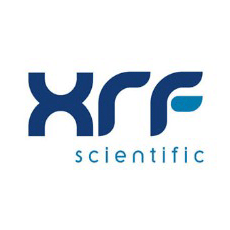Thermogravimetric analysis (TGA) is fundamental in assessing and characterizing minerals. The approach in geochemistry and material science provides critical insights into minerals’ composition, decomposition, and thermal stability behavior.
This article discusses TGA’s principles, benefits, and uses in mineral inspection.

Image Credit: Maksim Safaniuk/Shutterstock.com
The Principles of Thermogravimetric Analysis
TGA is an investigative tool utilized to calculate material weight change as a function of temperature or time under controlled conditions. Its fundamental principle is simple.
When a sample is heated or cooled inside a furnace, its mass is analyzed for thermal influences that cause weight loss or gain, including decomposition, dehydration, or oxidation.1
Applications in Mineral Examination
- Determining mineral composition: TGA is especially beneficial for establishing complex mineral composition. By evaluating the weight loss patterns at certain temperature ranges, researchers can conclude the existence of numerous components, e.g., water (in hydrates), carbon dioxide (in carbonates), and organic matter.
- Thermal stability analysis: Mineral thermal stability is a fundamental field of study, particularly in sectors where materials endure high temperatures. TGA offers crucial insights into the temperatures at which minerals experience phase transitions, decompose, or melt. This information is critical for practical applications.
- Decomposition behavior: Understanding decomposition upon heating minerals is crucial for approaches like roasting in ore refining. TGA helps establish the temperature ranges where these decomposition reactions happen, optimizing industrial procedures.
- Hydration and dehydration studies: Numerous minerals, like clays and zeolites, have substantial water content. TGA accurately measures water loss. It delivers data on these materials’ structural properties and possible applications.
Benefits of Thermogravimetric Analysis
- Accuracy: TGA supplies precise and reproducible data, vital for detailed mineral characterization.
- Quantitative analysis: Unlike some qualitative methods, TGA provides quantitative data on the volume of each element in a mineral.
- Versatility: This approach can be used on various minerals. It corresponds with other investigative tools for a more thorough evaluation.
- Non-destructive: TGA is a non-destructive method, facilitating sample preservation for further inspection.
Recent Advancements and Future Directions
Recent developments in TGA include combining with other analytic approaches, including differential scanning calorimetry and mass spectrometry, to deliver broader information and expose weight changes and calorimetric and molecular data.
Future guidance indicates integrating AI and machine learning to analyze data, which could improve TGA’s predictive abilities in mineralogy.
Improve Mineral Examination with TGA
TGA is fundamental in mineral examinations. It provides comprehensive insights into mineral composition, decomposition, and thermal behavior, making it essential in academic study and industrial applications.
As technology improves, this method will keep growing, providing an even better understanding of the sophistication of minerals.
References
- Gallagher, P.K. and Brown, M.E. (2003) Handbook of thermal analysis and calorimetry: Applications to Inorganic and Miscellaneous Materials. 2nd edn. Netherlands: Elsevier Science. http://pyrotechnics.net.ru/library/thermo/Handbook_of_Thermal_Analysis_and_Calorimetry_Volume_2.pdf.

This information has been sourced, reviewed and adapted from materials provided by XRF Scientific.
For more information on this source, please visit XRF Scientific.